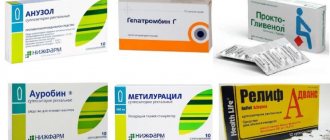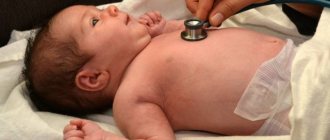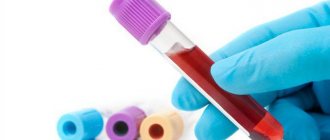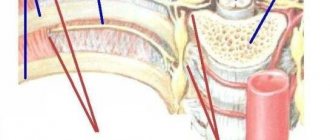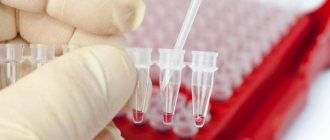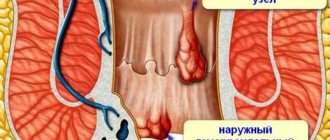Hemorrhoids are the most common vascular disease in proctology, in which the cavernous (cavernous) bodies in the terminal part of the rectum expand. Many people do not attach importance to its symptoms, thus leading the process to complications.
According to statistics, every 7 out of 10 people on our planet experience symptoms of hemorrhoids. Lack of timely adequate treatment can lead to serious complications. Among them are bleeding from hemorrhoids, their inflammation, thrombosis and necrosis, anemia, paraproctitis and anal fissure. MedicCity proctologists recommend undergoing regular examinations by a specialist to prevent unpleasant consequences of the disease. In the early stages, hemorrhoids are treated using the most gentle methods possible!
Hemorrhoids in women usually occur during pregnancy and childbirth. Hemorrhoids during pregnancy are quite difficult to treat, since most medications can adversely affect the development of the fetus. Therefore, women are recommended to visit a proctologist at the stage of pregnancy planning.
1 Consultation with a proctologist in MedicCity
2 Consultation with a proctologist in MedicCity
3 Consultation with a proctologist in MedicCity
Hemorrhoids in men are no less common. The disease appears as a result of a sedentary lifestyle, sedentary work (for example, hemorrhoids are an “occupational” disease of drivers), digestive disorders, constipation, alcohol abuse, and smoking. The cause of the disease can also be increased physical activity and hereditary predisposition.
It is customary to distinguish the following types of hemorrhoids: external (external) hemorrhoids and internal hemorrhoids.
This video talks about the main causes of hemorrhoids. Hemorrhoids are a chronic disease that, without timely treatment, progresses and often leads to serious complications.
External (external) hemorrhoids
The external manifestation of hemorrhoids is the presence of varicose veins (hemorrhoids), which are located outside the anus. External hemorrhoids appear near the anus.
Enlargement and inflammation of hemorrhoids occurs due to stagnation of blood in the pelvis and in particular in the cavernous bodies of the anal canal.
When a blood clot appears in the external hemorrhoid, swelling develops and the person begins to feel pain. The sufferer may feel hemorrhoids as a large, firm “bump” covered with thin, sensitive skin.
With poor nutrition, a sedentary lifestyle, heavy physical activity and stagnation of venous blood in the rectum, a complication in the form of acute thrombosis (the so-called “hemorrhoidal thrombosis”) may occur.
Blood in external (external) hemorrhoids (hemorrhoidal thrombosis) appears when the skin over the hemorrhoid becomes thinner and the blood clot breaks out in the form of a clot, then scarlet blood may appear.
1 Hemorrhoidectomy in MedicCity
2 Hemorrhoidectomy in MedicCity
3 Hemorrhoidectomy in MedicCity
Symptoms of external hemorrhoids
With this type of disease, the following symptoms of hemorrhoids can be distinguished:
- pineal-shaped protrusion around the anus;
- hemorrhoids, varying in size and location, which are easily palpable by the patient and increase with strain during bowel movements;
- pain and blood during bowel movements;
- unpleasant burning and itching in the anus;
- piercing pain at rest, after stool, when walking, coughing and sneezing (with the development of hemorrhoidal thrombosis);
- severe pain when touching hemorrhoids (hemorrhoids increase in size, swell, turn blue).
When is an increase in temperature dangerous?
High body temperature is an undoubted sign that some pathological process, usually of an inflammatory nature, is developing in the body. The higher the temperature, the faster it rises or the longer it lasts, the more serious the problem that caused it may be. This is why high temperatures are scary.
Meanwhile, in itself, an increase in temperature in most cases is a protective reaction to the penetration of infection. At high temperatures, the activity of pathogenic microorganisms decreases, and the body’s defenses, on the contrary, intensify: metabolism and blood circulation accelerate, and antibodies are released faster. But this increases the load on many organs and systems: cardiovascular, respiratory. High temperature depresses the nervous system and leads to dehydration. Possible circulatory disorders in internal organs (due to increased viscosity and blood clotting). Therefore, a high temperature that lasts for a long time can pose a danger in itself. Extremely high temperatures (above 41°C) are also dangerous.
Internal hemorrhoids
With internal hemorrhoids, the patient develops hemorrhoidal nodes, which are visually almost invisible. They are located under the mucous membrane of the rectum (i.e., inside the anal canal at the point of its transition to the rectum) due to protrusion of the walls of blood vessels. Internal hemorrhoids are usually painless.
Signs of this type of hemorrhoids at the initial stage are small blood discharge that can be found on toilet paper after bowel movements.
With this form of the disease, hemorrhoidal thrombosis can also occur.
1 AMI HAL-Doppler II - device for the treatment of hemorrhoids
2 AMI HAL-Doppler II - device for the treatment of hemorrhoids
3 Anoscopy apparatus
Symptoms of internal hemorrhoids
The following symptoms are characteristic of internal hemorrhoids:
- discharge of blood after defecation;
- pain during and (or) after bowel movements;
- feeling of incomplete bowel movement;
- prolapse of hemorrhoids;
- the appearance of space-occupying formations;
- feeling of discomfort and itching in the anus, etc.
Hemorrhoidal thrombosis, prolapsed hemorrhoids are symptoms of advanced hemorrhoids. Do not lead the situation to complications, do not self-medicate! If at least one of the symptoms of a proctological disease appears, immediately consult a coloproctologist! In the early stages, hemorrhoids are treated within 1 day using minimally invasive techniques.
Signs of a high fever
The following signs (symptoms) may indicate that the temperature is rising:
- a feeling of weakness, sudden fatigue, a general painful state;
- chills (mild chills at slightly elevated temperatures and severe chills at high temperatures);
- dry skin and lips;
- headache, body aches;
- loss of appetite;
- sweating (“breaks into a sweat”);
- arrhythmia.
If you are experiencing any of these symptoms, it would be a good idea to take a thermometer.
Stages of hemorrhoids:
- Stage 1 is determined by the release of blood from the anus without prolapse of hemorrhoids;
- Stage 2 is characterized by prolapse of hemorrhoids with spontaneous reduction into the anal canal (with or without bleeding);
- Stage 3 is characterized by periodic loss of nodes with the need for their manual reduction into the anal canal (with or without bleeding);
- Stage 4 is characterized by constant prolapse of hemorrhoids along with the rectal mucosa and the impossibility of reduction into the anal canal (with or without bleeding).
| Stages | Symptoms | Clinic | |
| 1st stage | Bleeding, discomfort | Hemorrhoids do not protrude from the anal canal. The vascular pattern of the mucous membrane is enhanced. | |
| 2nd stage | Bleeding, prolapse of nodes, itching, mucous discharge | The nodes fall out, but are reset into the anal canal on their own. | |
| 3rd stage | Bleeding, prolapse of nodes, anal itching, mucous discharge | Prolapse of hemorrhoids requires manual assistance to reposition them into the anal canal. | |
| 4th stage | Bleeding, constant loss of nodes, itching, discomfort, sphincter incontinence, pain syndrome | Constant prolapse and inability to reduce hemorrhoids into | |
A logical question arises: for what purpose was the classification of hemorrhoids developed? The answer is simple: in order to determine further treatment tactics.
Today, minimally invasive methods of treating hemorrhoids are widely used in medical practice, used both on an outpatient basis and in a hospital setting. These include infrared photocoagulation , sclerotherapy , ligation of hemorrhoids with latex rings , ligation of hemorrhoidal vessels under the control of Doppler ultrasound and others. The use of minimally invasive methods in an outpatient setting contributes to the successful treatment of most patients with hemorrhoids.
In the later stages of the disease, an operation (hemorrhoidectomy) is performed, aimed at radical removal of the three main collectors of cavernous tissue, which are the basis of hemorrhoids.
Perianal pruritic dermatitis
Perianal dermatitis can be caused by various reasons, and hemorrhoids are far from the main cause of its occurrence. However, prolapse of nodes or mucus secretion contribute to irritation of the skin of the perianal area, which can cause inflammation. Clinically, this is manifested by itching of varying intensity, redness of the affected area of the skin and, in some cases, moderate pain.
Prevention of perianal dermatitis consists of careful adherence to recommendations on daily routine and diet, as well as daily hygiene procedures for the perianal area. Since scratching itchy skin further worsens its condition, it is necessary to take anti-itch medications.
Treatment of hemorrhoids, treatment of hemorrhoids
- For stage 1 hemorrhoids, the following are indicated: conservative therapy, infrared photocoagulation, sclerotherapy.
- For stage 2 hemorrhoids, the following are indicated: conservative therapy, infrared photocoagulation, sclerotherapy, ligation with latex rings, suture ligation, combined methods.
- For stage 3 hemorrhoids, the following are indicated: ligation with latex rings, transanal resection of the mucosa using the Longo method, combined methods, surgical treatment (hemorrhoidectomy).
- For stage 4 hemorrhoids, surgical treatment (hemorrhoidectomy) is indicated.
Rustam Abdullaev, a surgeon and proctologist at MedicCity, talks about the technique of disarterization of hemorrhoids under ultrasound control in the Doctors program (TVC).
Many people believe that with today's choice of medications, hemorrhoids can be cured with medication alone, but this is a misconception. Today, the pharmacy can offer you a lot of drugs (ointments, suppositories, tablets) that will only temporarily eliminate certain symptoms of the disease. After their use, some relief may occur, but “experienced” patients understand that it is temporary, until the next exacerbation.
Early diagnosis allows our coloproctologists to perform gentle removal of hemorrhoids and treatment of hemorrhoidal thrombosis using the most modern minimally invasive techniques. You can learn about the advanced method of treating hemorrhoids - disarterization of hemorrhoids under ultrasound control using the AMI HAL-Doppler II device - from our video.
Causes of high temperature
Any inflammatory process can cause an increase in temperature. The nature of inflammation can be different - bacterial, viral, fungal. In most cases, the temperature is a concomitant symptom: for example, with otitis media, the ear hurts (“twitches”) and the temperature is elevated...
Temperature attracts special attention when no other symptoms are observed. Temperature against the background of standard signs of ARVI is ordinary, but only one high temperature is frightening.
Diseases that may cause a high fever without other symptoms
:
- ARVI and influenza. Flu, and in some cases other acute respiratory viral infections, can begin with a sudden rise in temperature. In this case, catarrhal symptoms begin somewhat later (in the late afternoon or the next day);
- angina. Along with fever, there is usually a sore throat when swallowing. The pain in the throat intensifies quite quickly, so that it cannot be ignored;
- chickenpox (chickenpox). The typical onset of chickenpox is high fever. Characteristic rashes may appear only on the 2-3rd day of illness;
- abscess (accumulation of pus in superficial tissues or internal organs). With an abscess, the temperature “floats”: temperature peaks can be interspersed with normal temperature during the day (in contrast to the typical temperature schedule for an “ordinary” infectious disease - when the lowest temperature is observed after waking up in the morning, and rises in the evening);
- inflammations of the genitourinary system (pyelonephritis, glomerulonephritis) are usually manifested by high fever and pain in the projection of the kidneys. But in some cases there may be no pain;
- appendicitis - can also occur without pain;
- meningitis and encephalitis (inflammation of the meninges of infectious origin). In this case, high temperature is accompanied by severe headache, nausea, and blurred vision. A characteristic symptom is tension in the neck muscles (the chin cannot be lowered to the chest);
- hemorrhagic fever (usually infection occurs through the bite of wild animals, for example, a field mouse). This also has its own characteristic symptoms - a decrease (even cessation) of urination, the appearance of subcutaneous hemorrhages (spotted redness of the skin, rash), muscle pain.
Elevated temperature (up to 37.5-38°C) without pronounced other symptoms
may be observed with:
- tuberculosis;
- oncological diseases;
- diseases of the thyroid gland (thyrotoxicosis);
- neurological disorders;
- allergic reaction (this is how individual intolerance to medications may manifest itself).
The following diseases also occur with an increase in temperature:
- inflammation of the lungs (pneumonia). Pneumonia is a common cause of high fever. In this case, chest pain, shortness of breath, and cough are usually observed;
- infectious diseases of the gastrointestinal tract (gastroenterocolitis). Here temperature is a side symptom. Main complaints: abdominal pain, diarrhea, nausea, vomiting;
- viral hepatitis A, which is characterized by the appearance of a jaundiced coloration of the skin and whites of the eyes;
- other viral diseases - measles, rubella, mumps (mumps), mononucleosis, polio, etc.;
- chronic diseases of the urinary system (chronic pyelonephritis, cystitis), in women - chronic salpingoopharitis. Along with low-grade fever, abdominal pain and urination problems may occur;
- sexually transmitted diseases (gonorrhea, syphilis, urogenital infections - toxoplasmosis, trichomoniasis, ureaplasmosis, etc.);
- chronic myocarditis and endocarditis. In this case, the usual symptom is pain in the heart area;
- autoimmune diseases (rheumatism, systemic lupus erythematosus, etc.).
This, of course, is not a complete list of diseases that can cause fever
Possible consequences and complications
If you give preference to self-medication, then there is a high probability of developing dangerous complications . Normal inflammation can result in bleeding and the growth of hemorrhoids.
The worst complication is the occurrence of paraproctitis due to a purulent infection. There is a danger of pus spreading to the pelvic organs.
Paraproctitis is very dangerous for older people with heart disease. For this category of people, operations are strictly prohibited. Only antibiotics will help.
Sometimes the cause of paraproctitis is tuberculosis. In this case, the consequences are unpredictable and death is possible.
- intoxication of the body due to fecal retention;
entry of pus into the peritoneum.
The most dangerous complication remains embolism , in which a piece of a blood clot breaks off and clogs a pulmonary vessel. The outcome is sad: from severe pneumonia to death.
Now that you know the seriousness and danger of a high temperature situation with hemorrhoids, what to do is the next important topic that we would like to address in this article.
- Detailed description of the various stages: first, second, third, fourth;
- Features of the internal course of the disease and external manifestations;
- A list of medications, suppositories and ointments that are used in the treatment of this disease can be found here.
There are also materials that may be of interest to you:
And you can find out about harmful and beneficial products for the male organ here.
Further actions
When it turns out that with hemorrhoids the body temperature can increase, you should understand what measures need to be taken. It is necessary to consult a doctor who will conduct an examination and find the cause of the fever.
The necessary treatment is prescribed depending on the type of complication. In the first stage of the disease, drugs containing aspirin are quite effective. But if the inflammatory process continues to develop, then anti-inflammatory drugs will help.
Standard treatment for a delicate illness with fever means:
the anal area is sanitized;- antibiotic treatment;
- sometimes surgery is required.
Sanitation cleanses the anorectal area of purulent discharge and promotes rapid healing of painful areas. This procedure removes the infection, otherwise it will spread to the genitals and cause inflammation.
Sanitation is characterized by an effective impact. When the infection in the rectum is eliminated, inflammation and temperature decrease.
Treatment with antibiotics is aimed at improving the patient's condition, and surgery eliminates the source of inflammation .
Pharmacy medications help relieve inflammation: Relief and Proctosan ointments. You can use folk remedies yourself: baths with decoctions and lotions of yarrow, calendula and oak bark. You can read about treating the disease using traditional methods here.
Conclusion
An increase in temperature in people suffering from hemorrhoids depends only on the presence of complications in the patient. Therefore, qualified care is needed in a hospital, where they will conduct a comprehensive diagnosis and not only reduce the temperature, but also completely cure the disease.
Hemorrhoids are a dangerous disease known to many firsthand. Information about whether there may be a temperature with hemorrhoids is very important, because this symptom is a clear indicator of inflammation. Timely treatment will help avoid unwanted complications.
